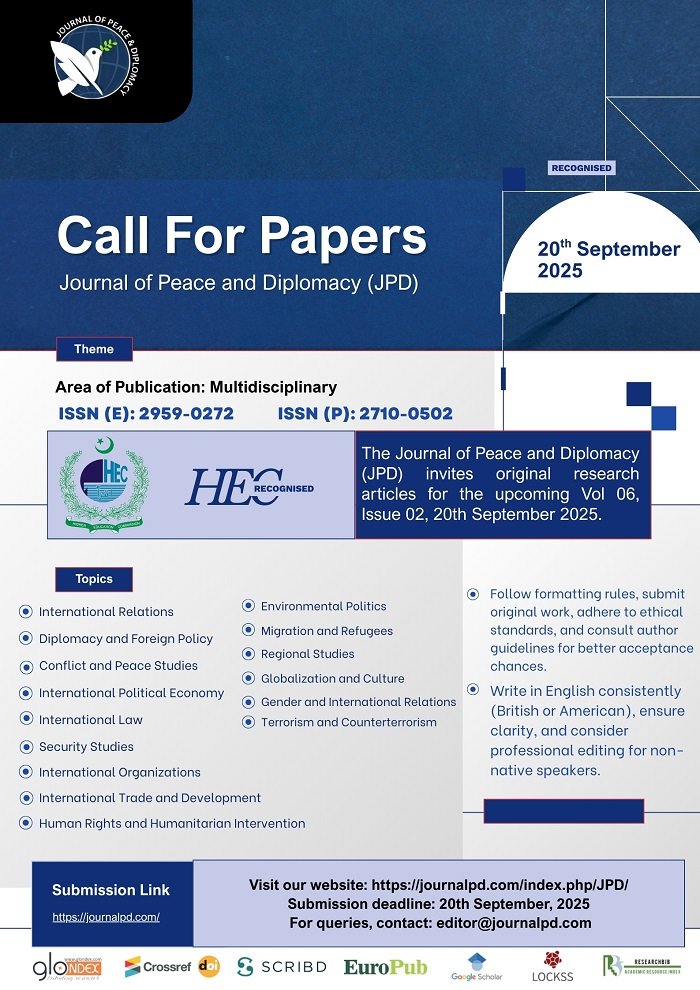Analyzing U.S.-India Military and Non-Military Agreements: Regional Implications for Pakistan and China
DOI:
https://doi.org/10.59111/JPD.006.01.0109Keywords:
India, United States, Pakistan , China, Military cooperation, Strategic Partnership , Regional Security, Arms RaceAbstract
South Asia is on the brink of a renewed arms race, as major and regional powers seek to assert their strategic influence in the region. The United States and China are engaged in a broader geopolitical rivalry, supporting India and Pakistan respectively to counter each other’s regional dominance. The United States, as the sole superpower following the disintegration of the Soviet Union, views the rise of China as a significant threat to its hegemony. In response, it is vigorously supporting India across multiple domains to contain China’s influence. The strategic partnership between India and the United States has intensified the arms race in South Asia. As part of this alliance, several key defense agreements have been signed, including the Communications Compatibility and Security Agreement (COMCASA), which enables India to receive advanced communication technologies, and the Basic Exchange and Cooperation Agreement (BECA), through which India gains access to data from over four thousand U.S. satellites. Additionally, the United States has facilitated the transfer of drone technology and granted a waiver for India’s acquisition of the Russian-made S-400 missile defense system. These developments have increased the strategic vulnerability of both Pakistan and China. Beyond military cooperation, India’s growing partnership with the United States also extends to high-technology collaboration and coordination within regional and international organizations, further complicating the strategic environment for Pakistan and China. In response, Pakistan is exploring alternative strategies to counterbalance India's enhanced capabilities. This research examines the potential implications of the expanding Indo-U.S. strategic partnership on the security and defense of Pakistan and China and to propose policy options to mitigate the emerging threats.
Downloads
Published
How to Cite
Issue
Section
License
Copyright (c) 2025 Musavir Hameed, Sana Ullah, Harsa

This work is licensed under a Creative Commons Attribution 4.0 International License.
Authors retain copyright and grant the journal right of first publication with the work simultaneously licensed under a Creative Commons Attribution (CC-BY) 4.0 License that allows others to share the work with an acknowledgment of the work’s authorship and initial publication in this journal.
















